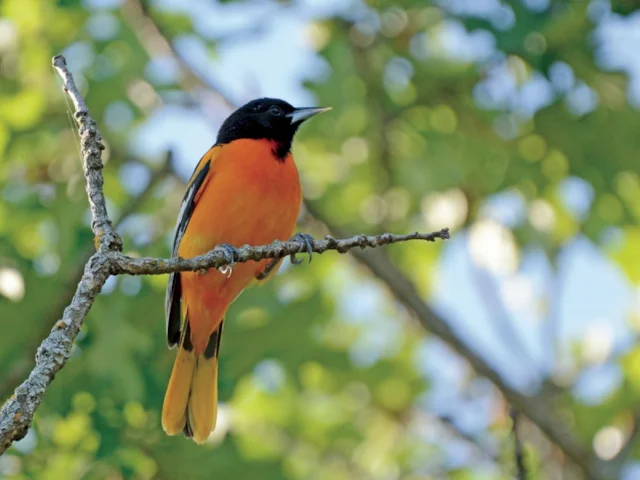Migrating birds speed up in spring
59a73515-0ade-44a7-af82-7819640ef6b3

A new study shows that migrating birds fly faster in spring than in autumn, trying to arrive at their breeding grounds earlier than rivals.
It turns out being the early bird really does have its advantages. Migrating birds travel faster in spring than in autumn because arriving late to their breeding grounds can affect their reproductive success.
Past studies have shown that migrants take shorter breaks in spring, but it’s harder to tell whether they also move faster in the air. When they used high-tech weather surveillance radars operated by NOAA and the Department of Defense on migrating birds, Kyle Horton of the University of Oklahoma and his colleagues found that birds did indeed fly faster in spring, as well as compensating more for crosswinds that could blow them off course.
“Many migration studies look at a few individuals ... but with radar, we’re now documenting the behaviours of millions of individuals on a given night. That’s a lot of data, and when you see flight behaviour results that are regionally or seasonally different, it’s quite compelling,” says Horton. He hopes birds’ ability to adjust their migratory behaviour for different conditions will buffer them against the effects of climate change, which may cause large-scale shifts in wind intensity.
This study made use of recent upgrades to government radar stations. “In 2013 an additional plane of polarisation was added to the radars, giving us another dimension to look at migratory birds,” explained Horton. “This allowed us to measure the orientation of birds directly for the first time.”
“Horton [and his team] have tapped the great potential of large-scale surveillance radars to advance our understanding of migration ecology,” adds the University of Delaware’s Jeff Buler, a radar ecology expert who was not involved in the study. “Their novel analysis reveals macroscale patterns in the aggregate behaviours of migrating birds that support existing literature on flight strategies of migrants. In addition, their analysis makes new discoveries about greater overall wind compensation during spring and new hypotheses about the processes underlying these patterns.”
Horton, K G, Van Doren, B M, Stepanian, P M, Farnsworth, A, and Kelly, J F. 2016. Seasonal differences in landbird migration strategies. The Auk 133: 761-769.
doi: http://dx.doi.org/10.1642/AUK-16-105.1.
It turns out being the early bird really does have its advantages. Migrating birds travel faster in spring than in autumn because arriving late to their breeding grounds can affect their reproductive success.
Past studies have shown that migrants take shorter breaks in spring, but it’s harder to tell whether they also move faster in the air. When they used high-tech weather surveillance radars operated by NOAA and the Department of Defense on migrating birds, Kyle Horton of the University of Oklahoma and his colleagues found that birds did indeed fly faster in spring, as well as compensating more for crosswinds that could blow them off course.
“Many migration studies look at a few individuals ... but with radar, we’re now documenting the behaviours of millions of individuals on a given night. That’s a lot of data, and when you see flight behaviour results that are regionally or seasonally different, it’s quite compelling,” says Horton. He hopes birds’ ability to adjust their migratory behaviour for different conditions will buffer them against the effects of climate change, which may cause large-scale shifts in wind intensity.
This study made use of recent upgrades to government radar stations. “In 2013 an additional plane of polarisation was added to the radars, giving us another dimension to look at migratory birds,” explained Horton. “This allowed us to measure the orientation of birds directly for the first time.”
“Horton [and his team] have tapped the great potential of large-scale surveillance radars to advance our understanding of migration ecology,” adds the University of Delaware’s Jeff Buler, a radar ecology expert who was not involved in the study. “Their novel analysis reveals macroscale patterns in the aggregate behaviours of migrating birds that support existing literature on flight strategies of migrants. In addition, their analysis makes new discoveries about greater overall wind compensation during spring and new hypotheses about the processes underlying these patterns.”
Horton, K G, Van Doren, B M, Stepanian, P M, Farnsworth, A, and Kelly, J F. 2016. Seasonal differences in landbird migration strategies. The Auk 133: 761-769.
doi: http://dx.doi.org/10.1642/AUK-16-105.1.

